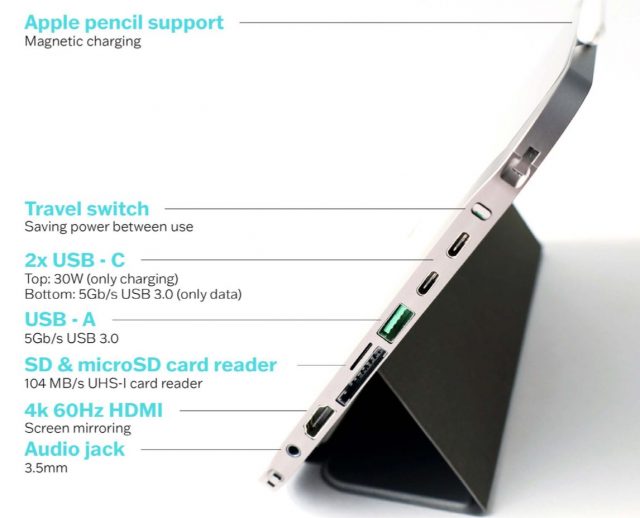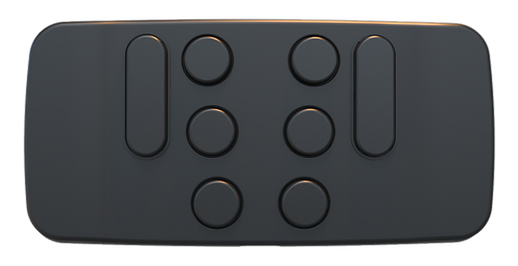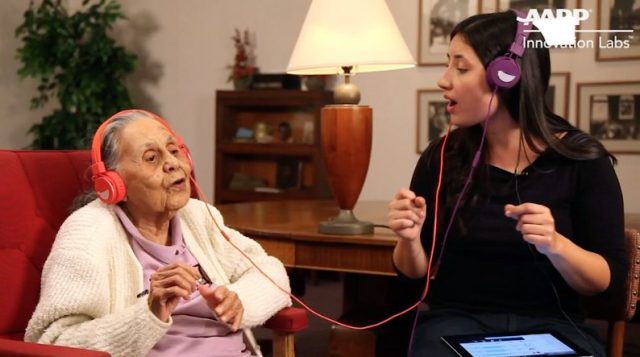CES 2021: Multi-Port iPad Cases, MacBook Pro SSDs, Videoconferencing Cameras, and a Plane You Can Drive
Eureka Park, the startup section of CES, is one of my favorite breakouts within the show. If you have an affection for scrappy tech companies that consist of two guys in a garage with half a prototype and big dreams, you can’t do better than Eureka Park. You’ll see the wildest ideas alongside downright bizarre ones, and you can tell at a glance from the quality of the presentation whether a company has some venture capital or needs to get lucky at a blackjack table to buy airfare home.
That is, that’s how it works most years. This year’s entirely virtual CES has upended the usual filters. Physical booths are expensive and make it easy to get a feel for how likely a company is to be around in a year. Online booths are cheaper, and the CES website format makes them all look similar. There are still cues whether a company has competent public relations support, but the amount of time it takes to make a first impression has gone up from several seconds to a few minutes—instead of a glance at a booth, I’m double-clicking on PDFs if the three-sentence description sounds at all interesting. And while the number of exhibitors this year is down from over 20,000 to under 2000, over 600 of them come up in a search for Eureka Park booths—way too many to get the comprehensive grasp of the entire section that I can get on the show floor.
It makes me look forward to a live CES next year—but if they continue doing online exhibits as a hybrid, I truly hope CTA comes up with a better presentation.
Fledging Hubble iPad Case and MacBook Pro Internal SSDs
I have to hand it to Fledging, because it has a lineup of three products that range from the unlikely to the supposedly impossible. In the unlikely category: the Hubble iPad Air or Pro case, an aluminum enclosure that adds two USB-C ports (one for data, one for charging), a USB-A port, both SD and microSD card readers, and HDMI output to your previously port-limited iPad. There’s even a 3.5mm microphone jack. It’s available now for $99.99 for the 11-inch models or $109.99 for the 12.9-inch Pro, but with shipping delays due to backorders.
On the impossible side of things: an internal SSD upgrade for a 2016–2018 MacBook Pro. The Feather M17 SSD comes with all the tools necessary to pop open that MacBook that Apple told you could never be upgraded, although the upgrade process may not be for the faint of heart. (I don’t associate “this may take more force than expected” with a low-stress process.) The sales page lists sizes from 256 GB to 2 TB ranging in price from $87.99 to $384.99, but at press time, everything larger than 512 GB is sold out.
Meeting Owl Pro Videoconferencing System
Chalk this one up to “necessity is the mother of invention.” The premise of the Meeting Owl is to enable hybrid in-person and remote meetings. The Meeting Owl is a standing microphone and 360° camera with a stylized owl face that reminds me of my college Anthropology class. It automatically figures out whoever is speaking within its range and feeds it to Zoom. The range is a 12-foot (3.7 m) radius for the standard Meeting Owl or 18 feet (5.5 m) for the Meeting Owl Pro. Place your in-person people around the Owl, put everyone coming in over Zoom on a large flatscreen monitor on the wall, and Bob’s your uncle. But normally, you wouldn’t use an Owl over that kind of distance; at a typical conference table with six people, a 3-foot (0.9 m) radius is more likely, which makes you socially distanced from the person opposite you but only 3.21 feet (⅓πr) from the person to your right. This makes Dr. Fauci sad.
So the Owl Labs people came up with Meeting Owl Connect: add a second Meeting Owl Pro to the first one, and the two coordinate with one another to focus on the speaker in a larger radius, meaning that everyone in-person can sit in a wider oval (presumably around a very long conference table). It’s a pricey solution: a Meeting Owl Pro costs $999, and you’ll need two of them. But it might lead to better give-and-take than if everyone is heads-down in their laptops. The regular Meeting Owl is cheaper at $799, for that happy day when we’re less concerned our coworkers are health hazards. Both are available now.
Spaces Coworking Office Space
Many of us have been stuck working from home for a year, and it’s unclear what the new normal will be once COVID-19 is tamed or eradicated. So it’s going to be an interesting time for coworking spaces: places where you can rent shared or dedicated workspaces in large office environments. If you’ve heard the drama surrounding WeWork—whose founder sounds like a lunatic—you’re familiar with the concept. It was already common for startups to launch in one of these environments to avoid high rent costs or the inconvenience of moving as they expanded. Now I expect there will be a new wave of workers who think, “You know, sometimes it really is convenient to work from home,” and may also think, “but today I really must get out of the house.”
Spaces is one of many competitors in the field, but caught my eye for two reasons: 1) its workspaces do seem really pleasant (and quieter than my usual Starbucks), and 2) most of these firms charge extra for hot-desking when members travel to other cities, while Spaces includes that in membership. With 3500 locations, it’s probably near you and also where you’re eventually going. Spaces’… er, spaces are decorated in upscale IKEA, include natural light, and have amenities like a cafe and a receptionist—although unlike some competitors, the coffee apparently isn’t free. The spaces quaintly provide “phone booths” for phone or Zoom calls that require privacy, or for changing into Superman. Spaces memberships appear to vary in price by home city but cost $226 per month for New York, Philadelphia, and Los Angeles. The company also rents dedicated desks and larger spaces for those who prefer to stick to the same place without sharing.
TEMO Electric Boat Motor
I have a soft spot for genius ideas that are obvious only in retrospect. The TEMO boat motor probably got started when someone was using an immersion blender and thought, “What if I made this bigger?” The TEMO 450 is a 450-watt electric boat motor that weighs just 11 pounds (5 kg) and is the size of an oar. Hop into a boat or dinghy, attach the anchoring hub to the back of the boat, and thread the TEMO through the hub—now you have a directional propeller that can drive the boat for up to 80 minutes. It’s pollution-free, doesn’t require pull-starting, and works well in shallow water. The French company just announced worldwide shipping and is taking orders from its website: the price is €1450 ($1735).
EyeLights Motorcycle Heads-Up Display
I’ve been looking forward to having augmented reality eyewear since before Google Glass swung and missed the ball. (C’mon, Apple, get cracking!) EyeLights has probably the closest I’ve seen to a solid implementation of the idea. The Eyeride is a fingertip-sized display with flat speakers that mounts on the inside of a motorcycle helmet in the upper-right field of view of your right eye. Anything displayed on the clear glass screen appears as a transparent overlay that doesn’t obscure the real world around you. An included remote that mounts on the handlebar controls the setup when it’s too noisy for Siri. EyeLights claims that your reaction time will be 4.3 seconds faster using its HUD, presumably compared to looking down at Maps on your phone. Now shipping worldwide for €499 ($600). What I don’t understand: the similarly-priced Eyelights HUD for cars is an unexciting monitor that mounts on your dashboard—why not make an Eyeride mount for when you’re not in a helmet?
Breezm Custom Eyeglasses
If you’ve had trouble finding glasses that looked right, Breezm offers 3D-printed eyeglass frames that are custom-made to fit your face in a design of your choosing. My personal style is toward utilitarian eyeglasses, so this seemed silly to me at first—given the hundreds of frames at any optometrist’s office—but then I remembered: my glasses always develop a slight left-to-right tilt that drives me irrationally bonkers. I’d pay money for a line as straight as the horizon. The lightweight material is flexible enough to allow the glasses to bend at the nose bridge by 45 degrees. Breezm operates stores in Korea and intends to launch in the US market by the end of 2021 with an online face measuring tool that will map the contours of your face, then enable you to pick out the overall design, colors or patterns, and temple styles. Pricing is expected to range from $220 to $390. There’s a mailing list for announcements and an online survey—ten people filling out the survey will receive a free pair.
Hable One Braille Keyboard
Macs and iOS devices include VoiceOver to read what’s happening on screen for the visually impaired, and they work with third-party braille displays that can be more efficient than voice. But that page doesn’t mention hardware braille keyboards for input (although Apple provides a software braille keyboard in VoiceOver). These exist, but that gap is now further filled by the portable Hable One, an eight-button Bluetooth keyboard that enables typing directly in braille. The keyboard is about the size of an iPhone 5 and weighs 3.5 ounces (90 g), which the website amusingly says is less than a banana on one page, and less than a pear on another. You hold it like a game controller in both hands with the buttons facing outward. In addition to text input, it includes a number of shortcut button combinations for navigating an iOS device. It also works with your Mac. It charges using a micro-USB cable and uses vibration alerts to keep you informed about battery status; when not in use, a “pocket mode” disables the buttons but keeps the Bluetooth connection active for quicker access.
Unfortunately, the Hable One is available for pre-order only in the Netherlands, Belgium, Germany, and the United Kingdom, but Hable’s support page says that people in other countries should get in touch by email to pre-order. Pre-order pricing is €199, discounted from the shipping price of €249. Hable plans on shipping devices in those four countries in April 2021 and promises that it’ll issue a full refund if release is delayed past October. It will come to the US by the end of the year.
AARP Innovations Labs
Not all of the exhibitors in Eureka Park are startups. You’ll also see companies and organizations that provide services to startups. Perhaps surprisingly, one of these is AARP, the services and political interest group for people over 50. One of its initiatives is the AARP Innovation Labs, a startup accelerator that works with companies bringing “AgeTech” to market. The AARP Innovation Labs presentation was loaded with interesting statistics, starting with the size of the over-50 American economy: $9 trillion this year, and $30 trillion estimated by 2030. The AARP Innovation Labs seek to support disruptive technologies in three categories it calls “health, wealth, and self.” Problems across all three are difficult to tackle and large in scope. In the past year, 20% of all Americans were called upon to be a caregiver to a member of their family—and while it was usually older people needing the most intensive care, the people doing this work were in every generation. Combine that with money stress: 40% of Americans can’t cover an emergency expense of $400, and the median retirement savings of people in their fifties is $117,000—not very much to cover decades. And as people age, many lose lifelong friends and family to death, disability, and breakdown of social networks; AARP reports that the resulting loneliness increases mortality as much as smoking 15 cigarettes daily.
The AARP Innovation Labs can’t solve these problems, but it supports technologies that address them. Augmented reality could allow people to design a new living space when moving is necessary or provide displays of reminders and useful information to those who need a little extra memory help. Wearables and ambient sensors monitor health data and relay it to the wearers or their loved ones, allowing people to stay more independent while still having a safety net. Voice technologies improve social engagement and remove barriers caused by loss of physical capability. And startups supported by the AARP Innovation Labs are using technological aids to address subjects that are typically taboo among the elderly or their families, like sexual health and end-of-life planning.
The AARP Innovation Labs website is primarily geared to startups, but it has a showcase of supported companies and a newsletter you can subscribe to stay abreast of its work. Sounds like interesting things are happening there.
PAL-V Flying Car (Or Drivable Plane)
I couldn’t resist. The PAL-V Liberty is a gyroplane that folds up into an automobile. Yes, it’s another flying car at CES, but this one is unique for two reasons: it’s being released worldwide instead of just in Japan (see “CES 2021: Family Firewalls, Flying Cars, and Creepy Pet Robots,” 25 January 2021), and PAL-V is now taking orders for its first production model rather than vaguely promising delivery later this decade. The website carefully doesn’t give a date of delivery but says it expects European orders to start being shipped (or flown, perhaps) this year.
What impresses me most about the PAL-V Liberty is that it’s realistic. Every other flying car proposal I’ve seen promises an autonomous AI piloting while you sip a tasty beverage. Not so the PAL-V Liberty: you need a pilot’s license, and the dashboard is clearly of the plane controls variety. I could tell you some of its specs—two people, up to 100 mph driving with a range of 800 miles (160 km/h for 1315 km) or 90–110 mph flying with a range of 250 miles (140–180 km/h for 400 km), all on regular high octane gasoline. But the key number is the price: $599,000 for the Liberty Pioneer Edition, of which only 90 will be made and will be the first shipped. Those who are willing to wait a bit longer can pick up the Liberty Sport for $399,000. There’s a complicated deposit scheme where the amount you spend and its refundability determines your place in line. Granted, you can buy three Lamborghinis for the price of a Liberty Pioneer—but man, it flies.
CES 2021 Gadget Survey #3
So, assuming price (and a pilot’s license) was no object, would you actually use the products or services described above in your everyday life? Register your vote in our quick survey. We’re doing this for each of our CES 2021 articles, and at the end, we’ll see which of the devices we’ve covered are most interesting to TidBITS readers.






How much weight does that Hubble ipad case add to the iPad?
As far as the SSD upgrade, I am always for ways to upgrade storage/memory/graphics of Apple’s closing systems, but I don’t see ANY warning on ESD. No one without some ESD safety experience should be opening computers (especially when humidity is low, like Winter time) without ESD precautions (strap, grounding mat, ESD-safe tools). Because you won’t always know that you zapped your $2000 laptop. Sorry if I sound overly careful…
That flying car is just a fancy autogyro. James Bond and Little Nellie have been there before. :-)
It was always odd that the two-port, no-touch-bar MacBook Pro had a socketed SSD while the four port model did not, and it’s to Fledging’s credit that they actually developed a custom adapter for it (the SSD itself is a standard M.2 2242 NVMe module from another vendor, verified Mac-reliable by Fledging). It’s also odd that Fledging does not make it clear on the product purchase page that only the Late 2016 and Mid 2017 two-port models (A1708) are eligible, though it’s plain enough in this blog post. It’s an interesting option if you happen to have one of those models already and aren’t ready to shell out for an Apple silicon model just yet (or can’t use one); $349 is not bad for 2 TB. (Apple charges $800.)
Amen. Read up on “wounded” semiconductors. That’s why you see fools who are careless claim they’ve never damaged electronics by ignoring ESD. Static can change the threshold at which a “semi” changes from being an insulator to being a conductor — putting one or several components out of their specified voltage threshold.
I"ve walked into “computer repair” shops and demanded to go behind the curtain to see their workstations. Surprisingly few have ESD mats in place and wrist straps at hand.
Immersion blender for boats pricing differential appears to be the result of VAT not being charged for non-EU purchasers
While is is good to see another braille device, most braille displays also include a 8 key perkins input system, and AT Guys has been selling the Orbit has been selling the Orbit Writer 6 key braille input device for about 6 months, at about 1/2 the price you listed.
Thanks! I’ve excised that bit from the article to avoid confusing anyone else.
Just heard back from Fledging, the Hubble Connected is 1.5 pounds.